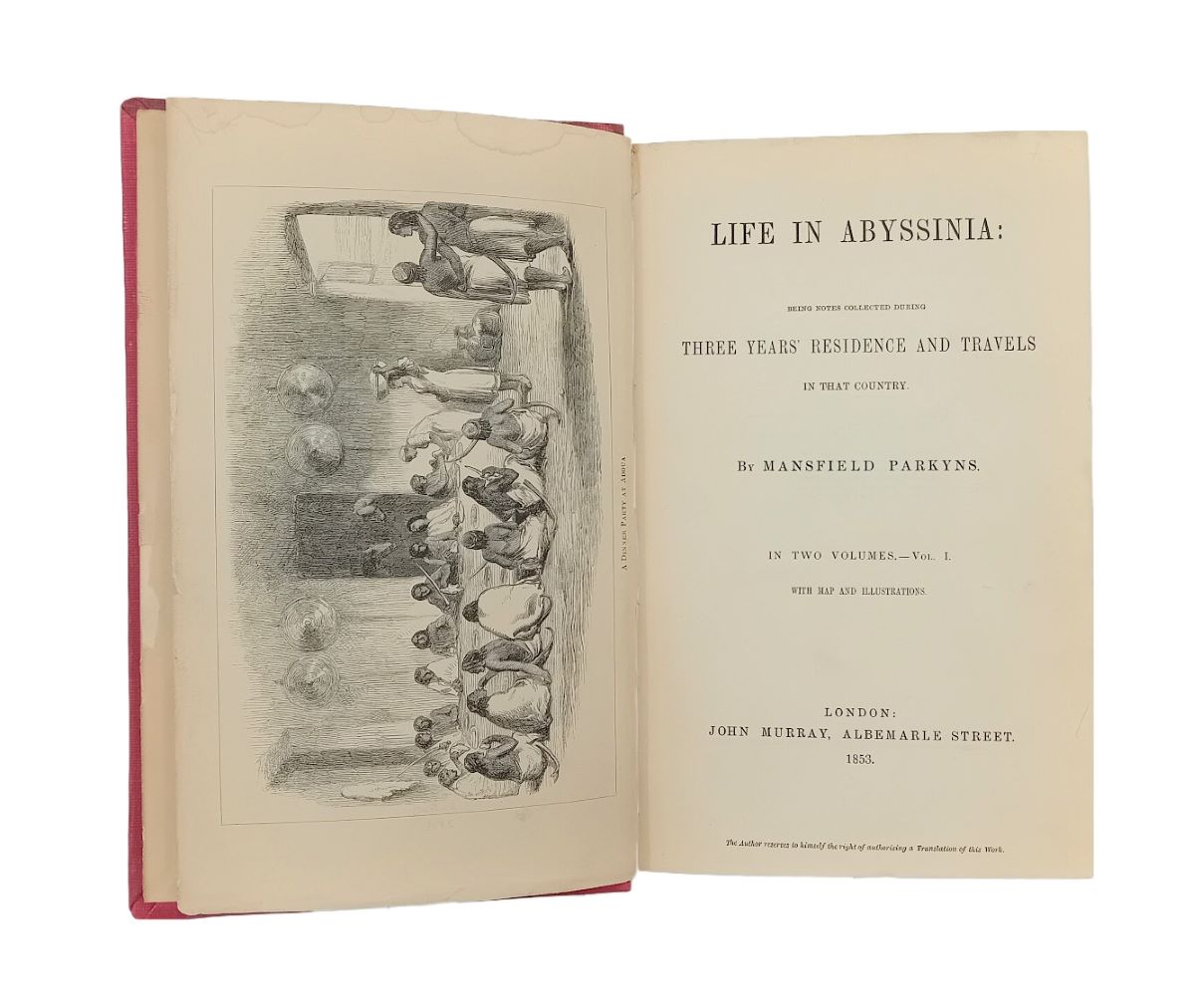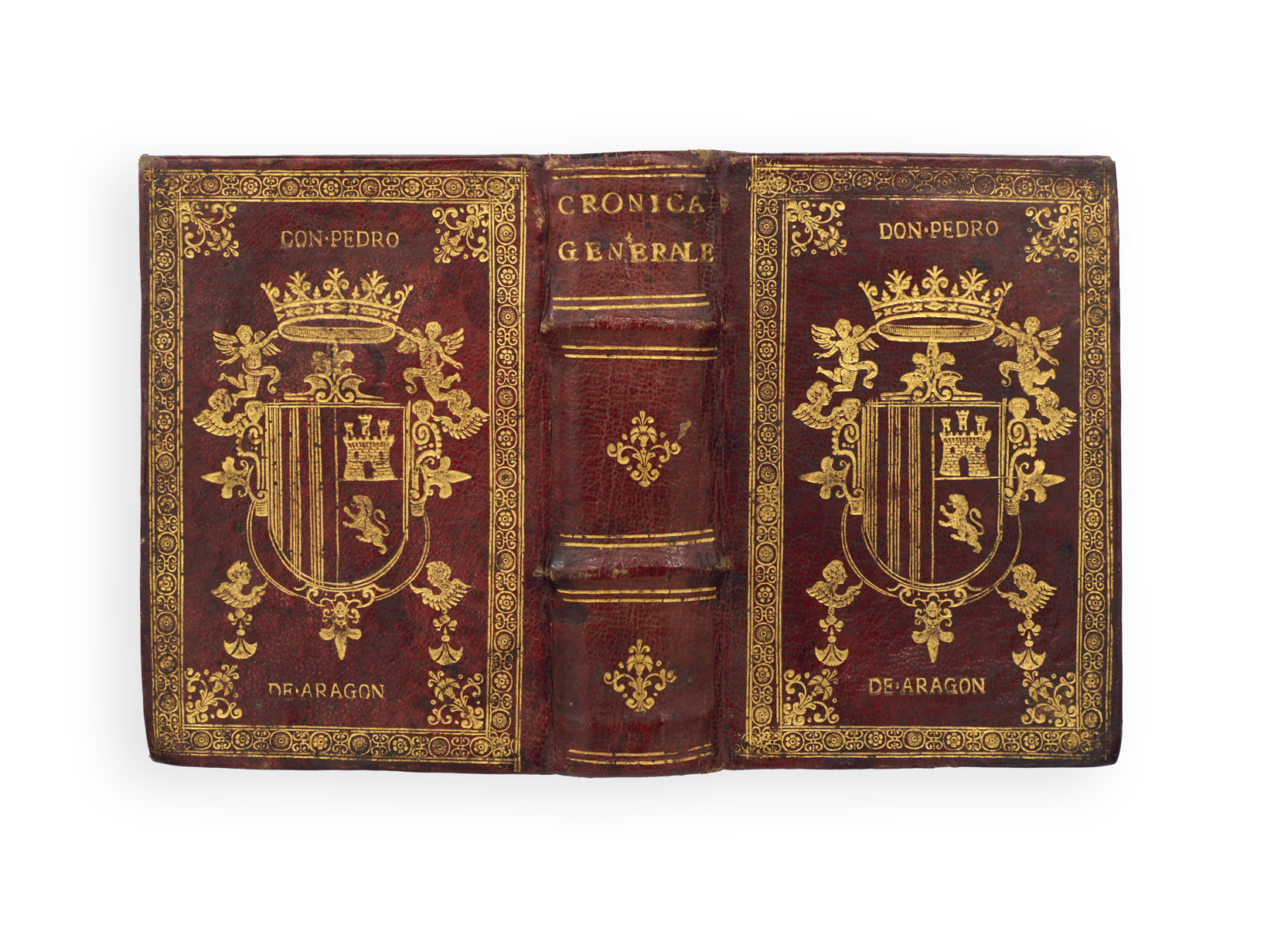
Abyssinian idyll
PARKYNS, Mansfield.
Life in Abyssinia: being notes collected during three years’ residence and travels in that country …
London, John Murray, 1853.
2 vols, 8vo, pp. xv, [1 (blank)], 425, [1], with frontispiece, 9 plates, 10 woodcuts in text, and 1 folding map; iv, 432, with frontispiece, 7 plates, and 3 woodcuts in text; chips to fore-edges of some pages at end of vol. 2 and closed tear at head of pp. 429-30, occasional light marks, some damp staining to plates, closed tears to folding map; overall good in later red cloth, spines lettered in gilt; spines sunned, light wear; bookplates of the ‘Army and Navy Club’ library.

Added to your basket:
Life in Abyssinia: being notes collected during three years’ residence and travels in that country …
First edition, a study of Abyssinia based on the author’s travels through the country, including remarks and observations on climate, natural history, hunting, missionary activity, slavery, manners and customs, government and law, diseases and modes of cure, and accounts of journeys to Taccazy, Cafta, Soufi, and Khartoum.
Having left his alma mater Trinity College, Cambridge, following what he described as ‘a scrape’ and others ‘a row’, Parkyns set off for the continent where he met a fellow Trinity alumnus Richard Monckton Milnes, whom he accompanied to Constantinople and then on to Cairo. ‘In Cairo, Parkyns decided to go to Abyssinia. He was initially fairly aimless, though as he travelled he formulated a plan for crossing the continent from east to west. He evidently enjoyed himself hugely, rambling around Abyssinia and the Sudan, and visiting areas largely unknown to Europeans. He travelled without a large baggage train and mostly with no other Europeans (though he joined John Bell and Walter Plowden for the first part of the journey). Wearing local dress and picking up the local languages as he went, he mixed happily with the local people, who found him non-judgemental and unruffled by events which would have unnerved most other Europeans. He so far acclimatized himself that in 1843 he married by local rites Tures, a villager from Addi Harisho, in a particularly remote part of Abyssinia, and with her had a son, John, who died in Eritrea about 1916—Parkyns's plan to bring him to England having come to nothing. Later (1846–7) he spent more than a year with the nomadic Kababish tribe as they roamed in the area around al-‘Ubayd in the Sudan, and he acquired his own camels. In between he entertained in his mud hut in Khartoum a party from Trinity College consisting of Francis Galton, Montague Bolton of the engineering family, and Hedworth Barclay of the banking family’ (ODNB).
For ‘reasons which are not clear’ Parkyns set off back to England in 1848, taking his journals and collections with him. These eventually formed the basis of the present publication, which first appeared in 1853 – a second, enlarged edition of Parkyns’ work was eventually published in 1868. The work ‘was widely but rather poorly reviewed, being out of step with the contemporary heroic notions of exploration—as indeed were his travels themselves. But those closely interested in the region recognized the value of the book, which contained considerable amounts of new information, and Parkyns was, albeit briefly, an active member of the Royal Geographical Society, serving on its council in 1854 and lecturing to and regularly attending meetings’ (ODNB). Many of Parkyns’ details on Abyssinia also referenced, and in so doing corroborated, earlier observations made by the traveller James Bruce, many of which had originally been treated as lies.

